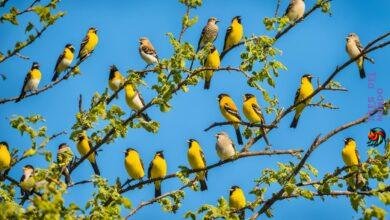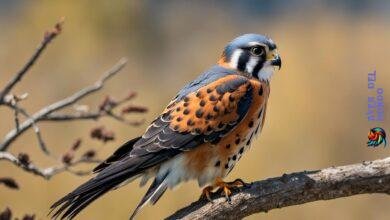Did you know that bird feeding has a rich history dating back to ancient Egypt and Rome? Birds were revered as messengers of the gods, and feeding them was seen as a symbolic act of reverence. Over the centuries, bird feeding has evolved from a ceremonial practice to a popular hobby enjoyed by people around the world, including in the United States.
If you’re looking to attract more birds to your garden and create a backyard paradise for bird watching, you’ve come to the right place. In this comprehensive bird feeding guide, we’ll explore the best bird seeds, techniques for attracting birds, tips for maintaining bird feeders, and much more. Whether you’re a seasoned bird feeding enthusiast or just starting out, our expert advice and practical tips will help you create a haven for birds right in your own backyard.
To get started, let’s take a closer look at the fascinating history of bird feeding and how it has evolved over time.
The Significance of Bird Feeders in Ancient Egypt and Rome
In ancient Egypt and Rome, bird feeding played a vital role in religious and ceremonial rituals. The act of feeding birds served both a practical purpose and held symbolic significance, connecting humans with the divine and the natural world.
Ancient Egyptians believed birds to be messengers of the gods, representing various deities and carrying prayers to the heavens. Feeding birds was seen as a way to honor these celestial messengers and strengthen the bonds between the earthly and spiritual realms.
Roman culture also revered birds for their sacred symbolism. Birds were associated with freedom, divination, and the supernatural. Feeding birds in Rome’s temples and public spaces was seen as a way to seek favor from the gods and ensure prosperity and good fortune.
While detailed historical records are limited, there are indications that structured bird feeding practices existed in these ancient civilizations, particularly in religious ceremonies and sacred rituals. These practices reflect the significance and deep-rooted cultural beliefs associated with bird feeding in ancient times.
«Feeding birds was an act of reverence, aligning humans with the gods and the natural world, symbolizing divine connection and seeking blessings.»
Further evidence of the symbolic importance of bird feed can be found in ancient artwork and hieroglyphics. Depictions of bird feeding scenes often appear in ancient Egyptian and Roman art, showcasing the close relationship between humans and avian creatures.
Although the exact techniques and methods of ancient bird feeding practices may remain a mystery, the underlying belief in the symbolic power of bird feeding echoes through the centuries, shaping the way we view and appreciate birds today.

The Symbolic Significance of Bird Feed in Ancient Egypt and Rome
| Ancient Egypt | Rome |
|---|---|
| Believed birds were messengers of the gods | Associated birds with divination and supernatural powers |
| Feeding birds symbolized divine connection | Bird feeding sought favor from gods for prosperity |
| Structured bird feeding in religious ceremonies | Bird feeding practiced in temples and public spaces |
| Depictions of bird feeding in ancient art | Artwork showcasing the close relationship between humans and birds |
The Emergence of Ornate Birdhouses in the Middle Ages
During the Middle Ages, birdhouses evolved from simple shelters to ornate structures that showcased the architectural and artistic prowess of the time. Nobility, in particular, developed a fascination with creating elaborate birdhouses as a way to attract and entertain birds in their gardens. These ornate birdhouses served not only as functional shelters but also as a means of expressing wealth and enhancing the aesthetics of their surroundings.
The nobility’s interest in avian presence during the Middle Ages can be attributed to various factors. Firstly, birds were seen as a symbol of beauty and grace, and having them in their gardens added to the overall ambiance. Furthermore, the nobility believed that the presence of birds brought good fortune and connected them to nature. It was also a status symbol, as the ability to attract and care for birds demonstrated wealth and abundance.
The emergence of ornate birdhouses marked a shift towards a more intentional approach to bird feeding aesthetics. The birdhouses were intricately designed, featuring elaborate carvings, painted facades, and architectural details inspired by the prevalent styles of the time. These structures were constructed using high-quality materials such as wood, stone, and metal, reflecting the nobility’s commitment to creating visually appealing habitats for the birds.
“Birdhouses during the Middle Ages were not merely functional; they were true works of art, reflecting the nobility’s interest in both nature and beauty.”
The ornate birdhouses of the Middle Ages served as focal points in the gardens, attracting not only birds but also the admiration of visitors. With their exquisite craftsmanship and attention to detail, these birdhouses became a visual representation of the nobility’s refined taste and appreciation for nature.
Birdhouse Example: Renaissance Palace-Style Birdhouse
One of the most iconic birdhouses from the Middle Ages is the Renaissance Palace-Style Birdhouse. This grand structure, inspired by the architectural splendor of the Renaissance period, features intricate carvings, stained glass windows, and a rooftop garden.
Designed to mimic the grandeur of a palace, the Renaissance Palace-Style Birdhouse offers a luxurious habitat for avian friends. Its spacious interior provides ample space for nesting and roosting, while the vibrant stained glass windows add a touch of elegance to any garden.
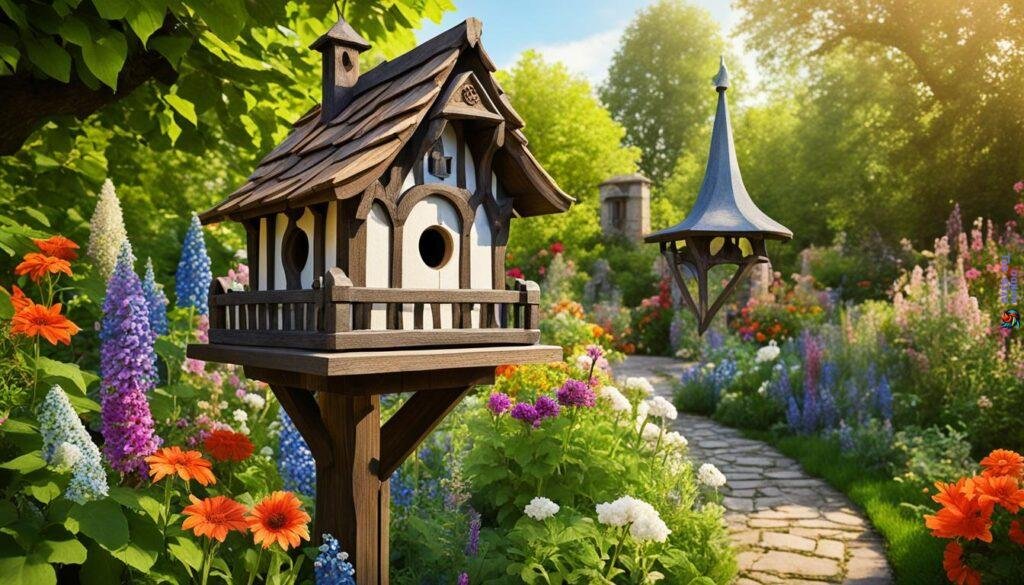
As with other ornate birdhouses of the Middle Ages, the Renaissance Palace-Style Birdhouse perfectly encapsulates the nobility’s fascination with avian presence and their commitment to creating aesthetically pleasing habitats for birds.
The Shift Towards Observational Bird Feeding in the Renaissance and Enlightenment
In the Renaissance and Enlightenment periods, there was a significant shift in the way bird feeding was approached. Instead of simply providing food, people began to observe and document the behaviors of birds that were attracted to specific feeding areas. This marked a change towards a more scientific and observational approach to bird feeding.
The study of birds, known as ornithology, gained prominence during this time. Scholars and naturalists sought to understand the intricacies of avian behavior and their interaction with the environment. This newfound knowledge led to a deeper appreciation for birds in their natural habitats and the development of a bird feeding culture.
Observational bird feeding not only provided nourishment for the birds but also offered insights into their social dynamics, feeding patterns, and migratory behavior. By carefully documenting these observations, individuals contributed to the growing body of knowledge about avian species.
Benefits of Observational Bird Feeding:
- Increased understanding of bird behavior and ecology
- Opportunity for scientific and citizen science research
- Deeper connection with nature and appreciation for biodiversity
- Identification and preservation of bird habitats
- Promotion of bird conservation efforts
Observational bird feeding played a crucial role in shaping our understanding of birds and their ecological importance. It fostered a sense of wonder and curiosity about these feathered creatures, inspiring further exploration and research.
To better comprehend the impact of observational bird feeding in the Renaissance and Enlightenment, consider the table below which highlights key developments during this period.
| Key Developments | Impact |
|---|---|
| Advancements in ornithology | Enhanced scientific understanding of birds and their behavior |
| Documentation of avian observations | Contributed to the growing body of knowledge about birds |
| Integration of observational practices into bird feeding culture | Created a deeper appreciation for birds in their natural habitats |
Observational bird feeding continues to be an integral part of modern-day bird enthusiasts and citizen science projects, allowing individuals to contribute to ongoing research and conservation efforts. Embracing this approach can truly transform the way we engage with and appreciate the avian world.
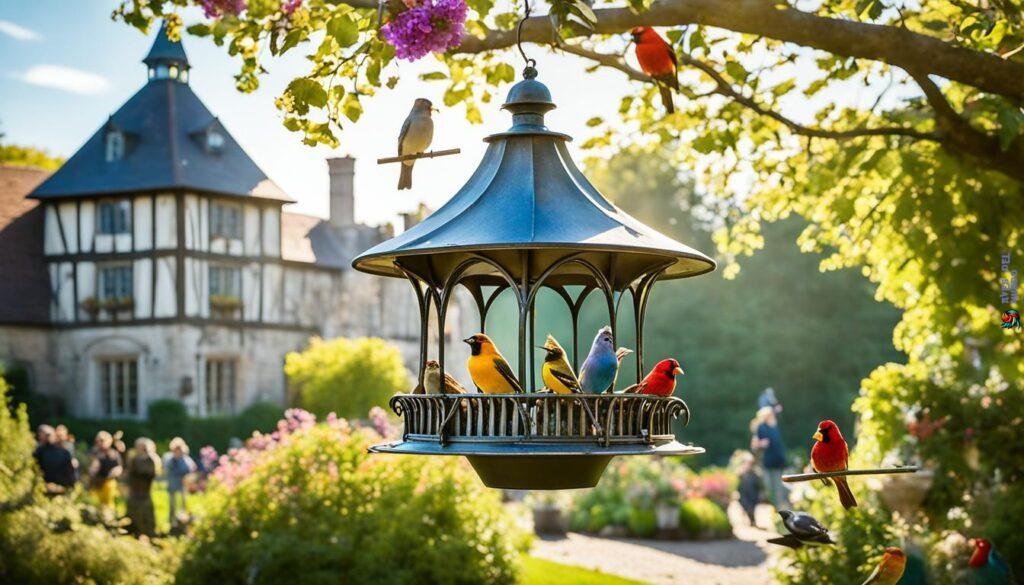
The Development of Purpose-Built Feeders in the 19th Century
In the 19th century, bird feeding underwent a significant transformation with the development of purpose-built feeders. These feeders were specifically designed to cater to the needs of birds and marked a shift towards bird feeding as a hobby rather than a practical response to environmental changes.
One popular type of feeder that emerged during this period was the tray feeder. Simple and easy to use, tray feeders provided a flat surface for birds to perch on and access their food. These feeders allowed bird enthusiasts to observe and enjoy the presence of various avian species in their own backyard.
This newfound interest in bird feeding as a hobby was influenced by both a growing appreciation for nature and advancements in technology. With the advent of the Industrial Revolution, innovations such as mass production and new manufacturing techniques made it easier and more cost-effective to produce purpose-built bird feeders.
Technological advancements also played a crucial role in the evolution of bird feeders during the 19th century. The availability of new materials, such as metal and glass, allowed for the creation of more durable and aesthetically pleasing feeders. These advancements not only improved the functionality of bird feeders but also enhanced their visual appeal, turning them into decorative elements for gardens and outdoor spaces.
As bird feeding gained popularity as a hobby, it became an enjoyable way for individuals to connect with nature and observe the behaviors and habits of different bird species. The 19th century marked a turning point in the cultural perception of birds, viewing them not just as pests or sources of inspiration, but as creatures to be appreciated and cared for.
«Bird feeding as a hobby became an expression of our curiosity and admiration for these fascinating creatures.»
In the next section, we will explore the mainstream adoption of bird feeding in the 20th century and its role in bird conservation movements.
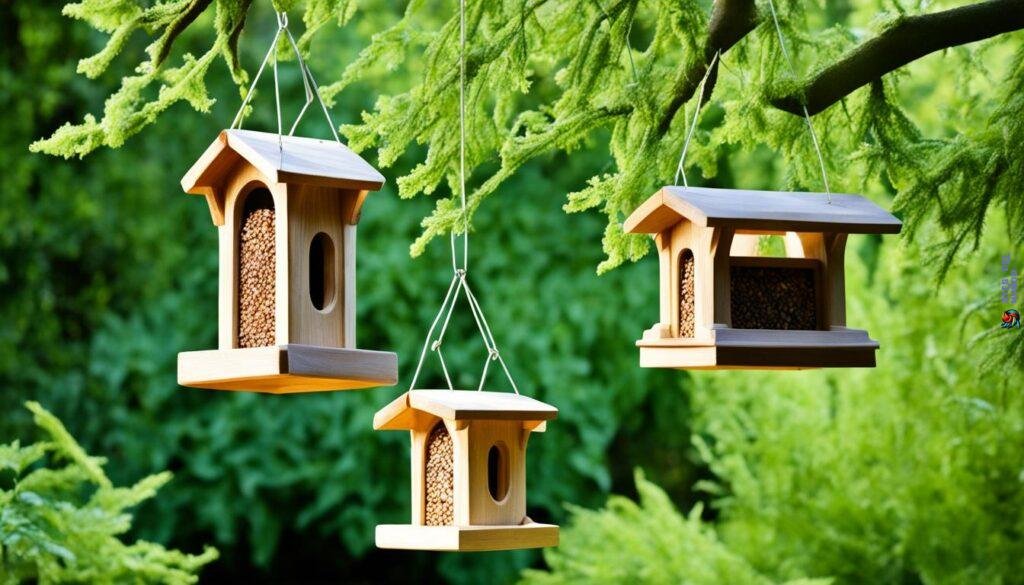
Advancements in 19th Century Bird Feeder Technology
| Advancement | Description |
|---|---|
| Tray Feeders | Simple and functional feeders with flat surfaces for birds to perch on and access their food. |
| Use of New Materials | Introduction of metal and glass in feeder construction, improving durability and visual appeal. |
| Technological Innovations | Advancements in manufacturing techniques and mass production made purpose-built feeders more accessible and affordable. |
The Mainstream Adoption of Bird Feeding in the 20th Century
The 20th century marked a significant turning point in the history of bird feeding. It was during this time that bird feeding became a mainstream hobby, gaining popularity among people from all walks of life. The growth of the middle class played a crucial role in this phenomenon, as more individuals had the financial means to pursue leisure activities and connect with nature.
Technological advancements also contributed to the mainstream adoption of bird feeding. The development of innovative bird feeder designs and materials made it easier for people to attract and provide food for birds in their backyard. These advancements not only enhanced the effectiveness and efficiency of bird feeders but also made them more aesthetically pleasing, turning them into decorative elements in outdoor spaces.
Furthermore, the 20th century witnessed the rise of bird conservation movements that recognized the importance of bird feeders in supporting avian populations. These movements launched public awareness campaigns highlighting the benefits of bird feeding and its role in bird conservation efforts. As a result, bird feeding evolved from a mere hobby to a conscious conservation practice, with individuals actively contributing to the well-being of bird species.

Overall, the 20th century saw the convergence of various factors that propelled the mainstream adoption of bird feeding. The growth of the middle class, coupled with technological advancements and the rise of bird conservation movements, transformed bird feeding into a popular pastime with substantial environmental significance.
| Factors contributing to the mainstream adoption of bird feeding in the 20th century |
|---|
| Growth of the middle class |
| Technological advancements in bird feeder designs and materials |
| Bird conservation movements raising awareness about the importance of bird feeders |
Technological Innovations in Modern Bird Feeders
In the modern era, bird feeders have undergone significant transformations thanks to advanced materials, innovative designs, and seamless technology integration. These advancements have elevated bird feeders from simple platforms for food provision to dynamic and multifunctional devices.
Advanced materials and designs have revolutionized the way bird feeders are constructed. Durable and weather-resistant materials like metal alloys, recycled plastics, and UV-resistant composites ensure longevity, even in harsh outdoor conditions. From sleek and minimalist designs to intricate and decorative ones, modern bird feeders blend seamlessly into any backyard or outdoor space, adding a touch of aesthetics.
Bird feeders now cater to the specific needs of different bird species, from seed feeders for songbirds to nectar feeders for hummingbirds. Innovative designs include adjustable perches and feeding ports to accommodate different bird sizes and feeding preferences.
Technology has also found its way into modern bird feeders, enhancing their functionality and educational potential. Integrated cameras and sensors enable bird enthusiasts to observe and capture bird behaviors up close. Some bird feeders even have built-in Wi-Fi connectivity, allowing users to livestream bird activity from their smartphones or tablets.
Technology Integration: A Window into the Bird’s World
One notable example of technology integration is the AviSense Bird Feeder Cam. This innovative bird feeder features a built-in camera and motion detection sensors, providing a real-time bird-watching experience. The live footage can be streamed to your device, allowing you to learn about bird species, behaviors, and feeding patterns right from your backyard.
The educational potential of modern bird feeders is immense, making them valuable tools for bird enthusiasts of all ages. Schools and nature centers are incorporating bird feeders into their curriculum, using them to teach students about bird identification, migration patterns, and the importance of conservation.
Bird Feeders as Educational Tools
By observing the birds that visit their feeders, students gain valuable insights into ecosystem dynamics, food chains, and the interconnectedness of nature. Bird feeders encourage curiosity and spark a love for birds and the natural world, nurturing future environmental stewards.
Moreover, the integration of technology in bird feeders allows for participation in citizen science projects. Bird enthusiasts can contribute valuable data to research initiatives by recording bird sightings, species diversity, and feeding habits. This collaboration between technology and bird feeders expands our understanding of avian populations and informs conservation efforts.

In summary, modern bird feeders have evolved from mere food dispensers to transformative tools that enhance our understanding of birds and their ecosystems. With advanced materials, innovative designs, and technology integration, bird feeders offer durability, aesthetic appeal, and educational opportunities. These modern marvels have opened a window into the intricate world of birds, making bird feeding a truly enriching and captivating experience.
The Role of Fruit in Bird Feeding
When it comes to attracting birds that don’t typically visit seed feeders, offering fruit can be a fantastic alternative. Different types of fruits can attract various bird species, providing a diverse range of feathered visitors to your backyard.
For fruit-loving birds like orioles, orange slices are a particular favorite. These vibrant citrus treats are sure to entice these beautiful birds to your feeding station. If you’re hoping to attract grosbeaks and robins, try offering grapes. These small, sweet fruits are a delectable treat that these birds can’t resist.
Planting fruit trees in your garden is another excellent way to attract fruit-loving birds without the need for feeders. Fruit-bearing trees such as berry bushes, apple trees, or cherry trees can provide a natural food source for birds, creating a tempting and abundant oasis in your backyard.
By incorporating fruit into your bird feeding routine, you can broaden the range of avian visitors and enjoy the delightful sight of fruit-loving birds feasting on nature’s bounty.
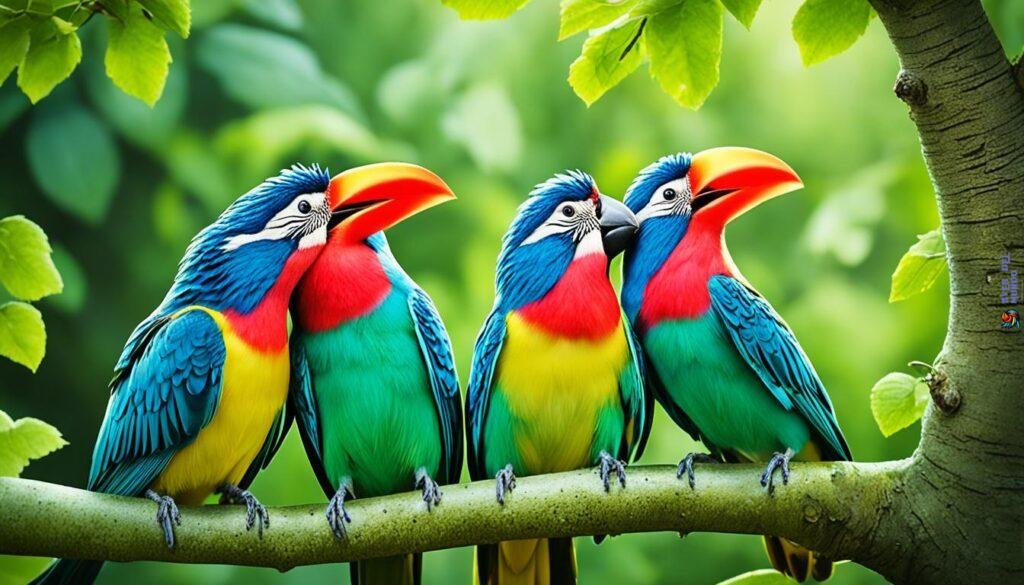
Types of Fruits Preferred by Birds
| Bird Species | Preferred Fruits |
|---|---|
| Orioles | Orange slices, grape jelly |
| Grosbeaks | Grapes, cherries, strawberries |
| Robins | Grapes, blueberries, strawberries |
Essential Bird Feeding Equipment and Accessories
To create an optimal environment for bird feeding, there are several key pieces of equipment and accessories that you should consider. These items play a vital role in attracting and providing for birds in your backyard. Some essential bird feeding equipment and accessories include:
Window Bird Feeders
If you enjoy watching birds up close, window bird feeders are a fantastic addition to your backyard. These feeders attach directly to your window, allowing for an unobstructed view of the birds as they visit for a meal. Window bird feeders come in various designs and sizes, catering to different bird species and seed preferences.
Bird Baths
Birds need water for drinking and bathing, and providing a bird bath can be a great way to attract them to your yard. Bird baths come in different styles, including pedestal baths, hanging baths, and ground-level baths. Make sure to place your bird bath in a quiet and safe location, and clean and refill it regularly to maintain hygiene.
Suet Blocks
Suet blocks are high-energy bird food that attracts a wide range of bird species, including woodpeckers, nuthatches, and chickadees. These blocks are made from a mixture of fat, grains, seeds, and fruits and provide birds with essential nutrients. You can hang suet blocks from specialized feeders or place them in wire cages to prevent squirrels from accessing them.
Squirrel-Proof Feeders
If you have cheeky squirrels raiding your bird feeders, consider investing in squirrel-proof feeders. These feeders are designed with mechanisms that prevent squirrels from accessing the bird food while still allowing birds to feed undisturbed. Squirrel-proof feeders often feature weight-sensitive perches or cages to deter squirrels and ensure that the birds have exclusive access to the feed.
| Equipment/Accessory | Description |
|---|---|
| Window Bird Feeders | Attachable feeders that provide a clear view of birds |
| Bird Baths | Water sources for birds’ drinking and bathing needs |
| Suet Blocks | High-energy bird food made from fat, grains, and seeds |
| Squirrel-Proof Feeders | Feeders designed to prevent squirrel access to food |
By incorporating these essential bird feeding equipment and accessories into your backyard, you can create a welcoming environment that attracts a diverse array of bird species. Remember to maintain cleanliness and provide a variety of bird foods to keep your feathered friends happy and well-fed.
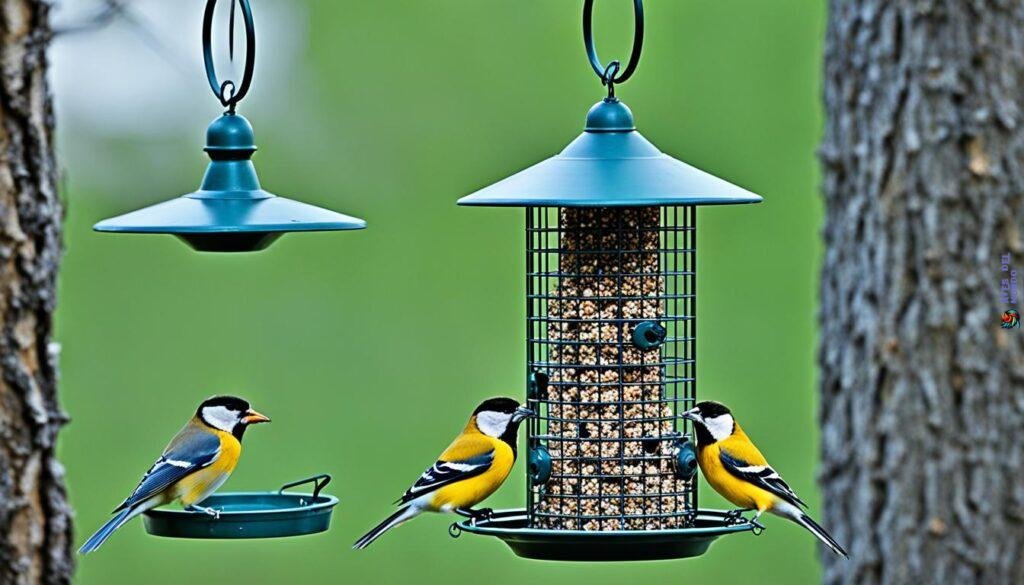
Homebird Window Bird Feeder with Strong Suction Cups
The Homebird Window Bird Feeder is a top-rated feeder that will instantly attract a variety of birds to your backyard. With its strong suction cups, this feeder can be securely attached to any window, providing you with an unobstructed view of the birds. It’s the perfect addition to your birdwatching setup or a great gift for any bird lover.
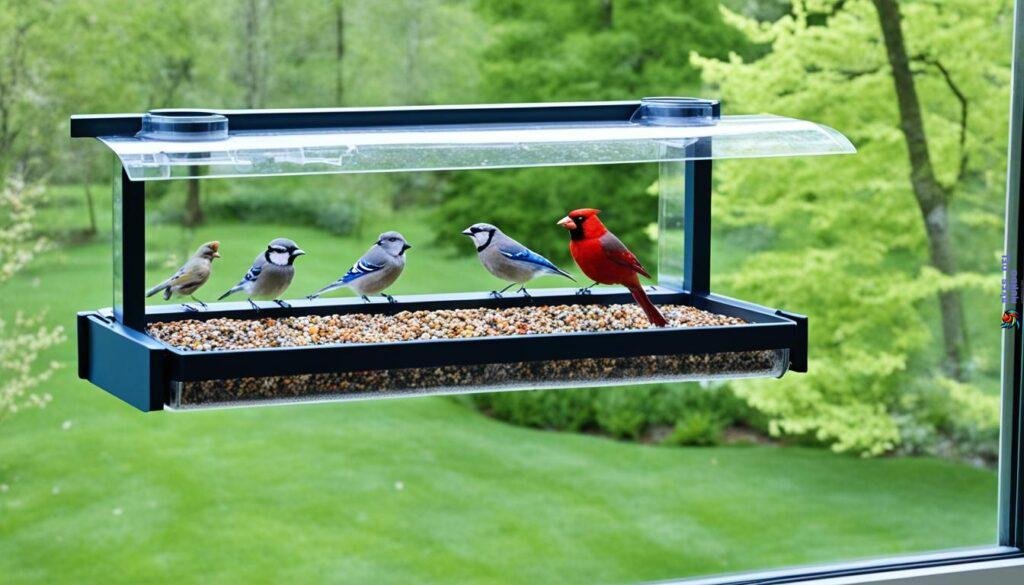
One of the key features of the Homebird Window Bird Feeder is its easy refill and maintenance design. The feeder comes with a removable tray that makes refilling bird seeds a breeze. Simply lift the tray, fill it up with your favorite bird seeds, and place it back in the feeder. No mess, no fuss!
The strong suction cups of the Homebird Window Bird Feeder ensure that it stays securely in place, even during bad weather conditions. You can rest assured that your feathered visitors will have a reliable food source, regardless of the season.
«The Homebird Window Bird Feeder is by far the best feeder I’ve ever used. The suction cups are incredibly strong, and the removable tray makes it so easy to refill. I can enjoy watching the birds up close without disturbing them. Highly recommended!» – Jane, bird feeding enthusiast
Whether you’re a seasoned birdwatcher or just starting out, the Homebird Window Bird Feeder is a must-have accessory. Its durable construction and thoughtful design ensure that you can enjoy the beauty of birds from the comfort of your own home.
Artisan Nester Tahera – A Stylish Bird Nesting Option
The Artisan Nester Tahera is the perfect choice for bird lovers who value both style and functionality. This beautifully handwoven bird nester provides a safe and snug abode for our feathered friends, ensuring their comfort and security.
With its exquisite craftsmanship and attention to detail, the Artisan Nester Tahera adds a touch of elegance to any outdoor space. Its intricate design and natural materials create a charming aesthetic that blends seamlessly with your garden or backyard.
This fair trade product is not only a testament to the skills of talented artisans but also a commitment to ethical practices. By choosing the Artisan Nester Tahera, you are supporting sustainable livelihoods and promoting a more equitable trade system.
The Artisan Nester Tahera offers multiple fixing options, making it versatile and easy to install. You can hang it from a sturdy tree branch using the attached loop or securely nestle it into the foliage of the bushes or shrubs. This flexibility allows you to create the ideal nesting environment for different bird species.
«The Artisan Nester Tahera combines beauty, functionality, and ethical craftsmanship to provide a stylish bird nesting option for nature enthusiasts.» – Birding Today
| Features | Specifications |
|---|---|
| Material | Handwoven natural fibers |
| Size | Approximately 8 inches in diameter |
| Fixing Options | Hang or nestle |
| Ethical Sourcing | Fair trade product |
| Care Instructions | Spot clean with mild soap and water |
Whether you are a seasoned birdwatcher or a nature enthusiast looking to create a peaceful sanctuary in your backyard, the Artisan Nester Tahera is the ideal choice. Its combination of style, functionality, and ethical sourcing make it a truly special bird nesting option.
Bird Species Suitable for the Artisan Nester Tahera
- Songbirds
- Sparrows
- Finches
- Wrens
- Warblers
Provide a welcoming haven for these beautiful birds with the Artisan Nester Tahera. Its cozy interior and secure fixing options will ensure that they return year after year to build their nests and raise their young.
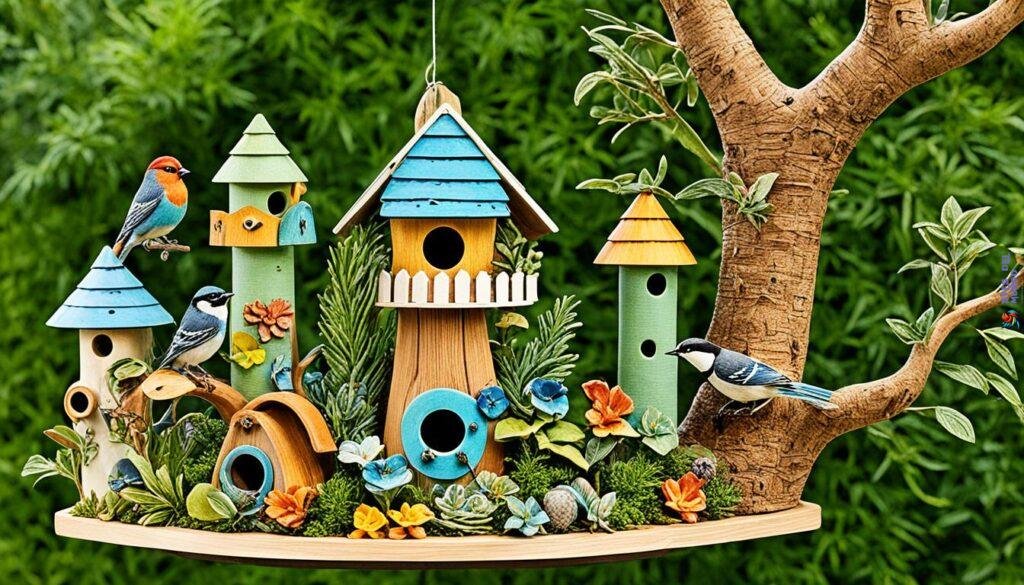
Create a stylish and inviting environment for birds with the Artisan Nester Tahera. Order yours today and be inspired by the beauty and tranquility of nature right in your own backyard.
The Handy Home and Garden Pressure Treated Wooden Wild Bird House
The Handy Home and Garden Pressure Treated Wooden Wild Bird House is a durable and reliable bird nest made from high-quality, pressure-treated wood. This ensures that the bird house is not only long-lasting but also resistant to weather elements, making it suitable for outdoor use.
Featuring a smart sloping roof design, this bird house allows rainwater to easily runoff, keeping the nesting area dry and cozy. This is essential for attracting a variety of common wild and garden bird species, as they prefer a safe and comfortable nesting environment.
The Handy Home and Garden bird house is designed to accommodate different bird species, offering them a secure place to build their nests and raise their young. Its sturdy construction ensures protection from predators, giving birds a sense of security while nesting.
To help you optimize bird attraction and care, the bird house comes with an informative leaflet that provides valuable insights and tips. With the Handy Home and Garden Pressure Treated Wooden Wild Bird House, you can create a welcoming haven for various bird species in your garden and enjoy the beauty of birds up close.


